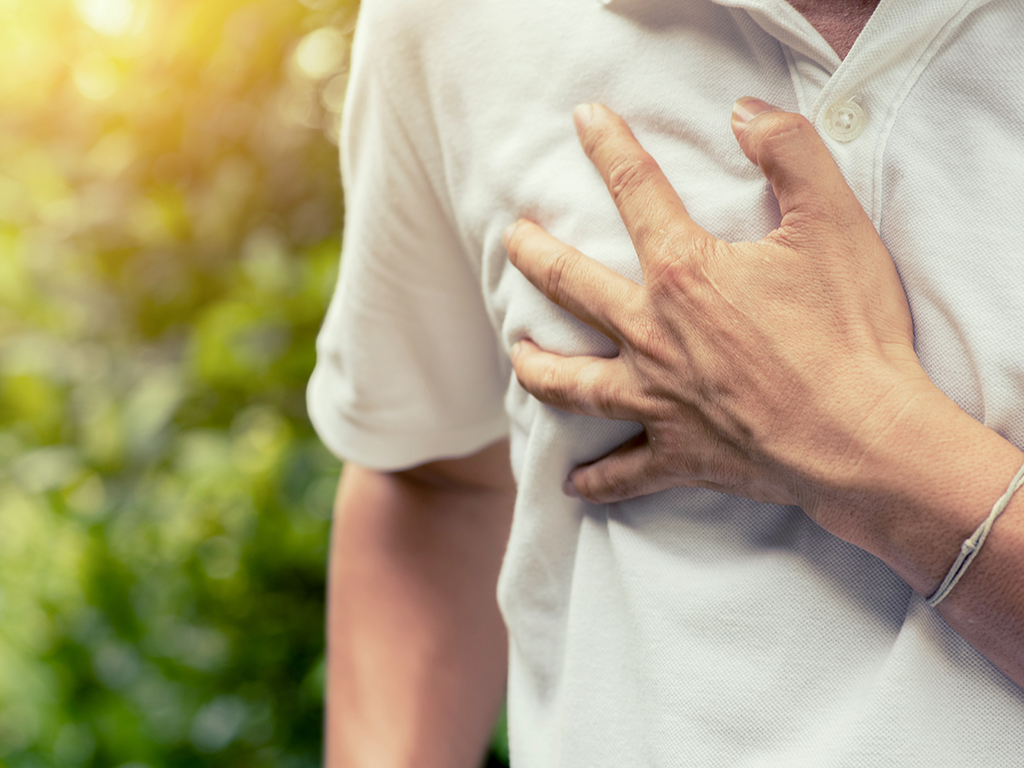Karl Wiggins was driving in Liberty, Texas, the first time he died.

“My hands fell off the wheel and my head dropped,” he told Eyewitness News.
Thankfully, his mother was in the passenger seat, and was able to take the wheel and prevent them from crashing. A passerby saw what happened and jumped in to help; he gave Wiggins chest compressions as he turned “blue and cold.”
WATCH BELOW: An egg a day could keep heart disease away

Once he was transported to the hospital, Wiggins’ heart kept stopping. That’s when doctors looked at his test results and concluded that he had Brugada syndrome, a disorder that falls under the larger umbrella of sudden arrhythmia death syndrome (SADS).
“SADS stands for a whole group of cardiac disorders that if left untreated, could lead to a sudden cardiac death event,” says Pam Husband, executive director of the Canadian SADS Foundation. “These are genetic heart conditions that can lead to death in otherwise healthy adults.”
The condition is especially prevalent among young adults under the age of 35 (although Wiggins is 54), and encompasses seven or eight known disorders, Husband says, but there are likely more that haven’t been tied to SADS yet.
“Research is ongoing in this field and they have uncovered a number of conditions in the last 10 to 15 years that prior to this didn’t have a name,” she says.
- Posters promoting ‘Steal From Loblaws Day’ are circulating. How did we get here?
- Canadian food banks are on the brink: ‘This is not a sustainable situation’
- Solar eclipse eye damage: More than 160 cases reported in Ontario, Quebec
- 3 women diagnosed with HIV after ‘vampire facials’ at unlicensed U.S. spa
The SADS foundation website lists six conditions associated with sudden death, including Brugada syndrome, catecholaminergic polymorphic ventricular tachycardia, long QT syndrome, short QT syndrome, Timothy syndrome and Wolff Parkinson White. Other SADS-related conditions may include malformations of the heart muscle.
Symptoms of the condition can be hard to link to SADS because they can actually seem rather mundane or could initially point to another disorder.
READ MORE: Sudden cardiac events far more common in young people, experts say
“Fainting, especially during exercise, and seizures are telltale symptoms,” Husband says. “But these can also be tied to emotional excitement. There’s a history of literature talking about people dying from sudden noises or from being on a midway ride. These people had SADS.”
Because the condition is genetic and unfortunately, many people only learn they have it when someone in their family dies unexpectedly, it can also be hard to diagnose.
It’s unclear how many people in Canada have SADS, but since people can live long and healthy lives with SADS and never have a sudden death episode, it’s hard to nail down statistics.
“Some research has been done by members of the Canadian Heart Rhythm Society and they concluded that between 700 to 800 people under 35 die from SADS every year in Canada. If that’s a true number, it would be the biggest cause of death in people under 35 after accidents and suicide.”
But Husband stresses that having SADS doesn’t mean your life will be cut short.
“It’s preventable and diagnosis isn’t a death sentence, but it can be extremely dangerous.”
READ MORE: Woman’s heart literally ‘breaks’ after her dog dies
After his diagnosis, Wiggins had a special defibrillator installed.
And the whole experience has given him a new perspective on his life.
“I think if someone put a gun to my head and threatened to kill me, I would say, ‘Shoot your best shot. I’ve been dead before.'”






Comments